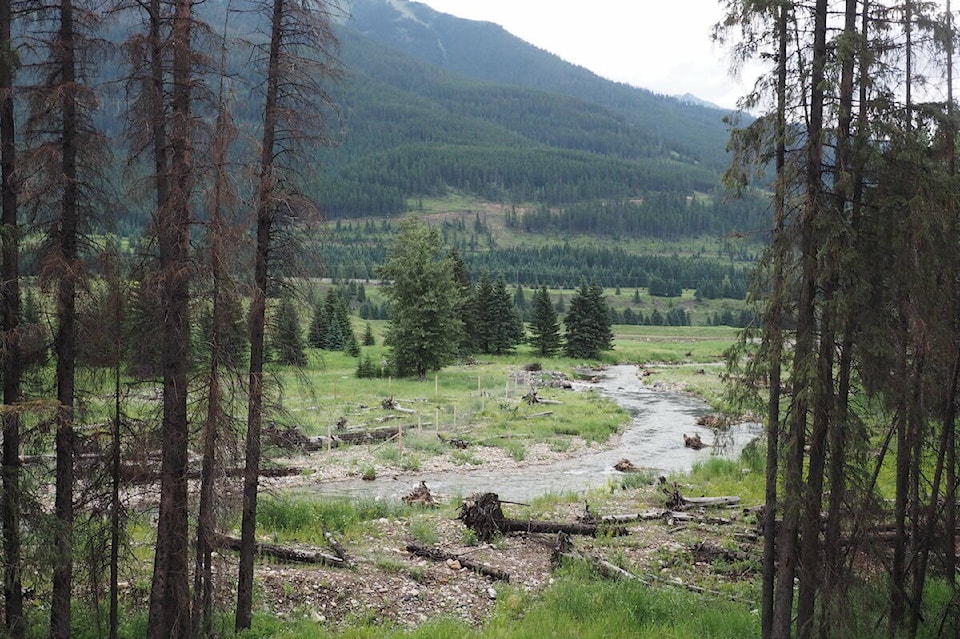A report on the decline in numbers of Westslope Cutthroat Trout (WCT) in the Upper Fording River between 2017 and 2019 has found that extreme winter conditions were exacerbated by mining activity affecting water flow in the river, contributing to a tough year for the river’s fish stocks.
In a report prepared for Teck by independent experts, the cause of a steep decline in the number of WCT in the Upper Fording River was found to be ‘extreme ice conditions, sparse overwintering habitats and restructuring fish passage conditions’ during the migration period in Fall 2018, with the greatest impact to fish numbers being in sections in and immediately downstream of the Fording River mine.
The report acknowledged that mining played a part.
“While some stressors such as cold weather are natural, mining development has altered the availability of overwintering habitats in portions of the river and exacerbated the challenges to fish passage through water use, channel widening and aggradation,” reads the report.
Water quality - which includes selenium - was not found to be a primary contributor to the decline, but it was noted that it “could have contributed to stress through ongoing, subtle effects of constituents related to mining,” according to the report.
Selenium is leached into the water from tailings left over from decades of mining activity in the area.
“If fish are stressed due to the quality of the water, they may be more susceptible to other stressors, and water quality cannot, therefore, be ruled out as a contributor to the decline.”
How many fish were exposed to poor water quality at such a level as to cause high-level effects was deemed to be low, however.
The 272-page report is available on Teck’s website, and is the result of an investigation by an ‘Evaluation of Cause’ team that were tasked with looking into the decline in WCT population in the Upper Fording River in 2019.
Going forward, the report recommends Teck’s water filtering programs continue in order to mitigate water quality concerns, and also included two recommendations for the company to apply.
The first was for the company to develop a watershed-scale hydrological model “to better understand surface water levels as influenced by landscape changes, groundwater interactions, consumptive water use, water diversion and water storage” in order to inform decisions on future projects in the area where Teck operates, and how developments would impact the ecology of the surrounding watershed.
The second recommendation was for the development of a WCT ‘recovery plan’, which, according to Teck, it has been pursuing since 2019.
“Since 2019, we have worked to rehabilitate approximately 40,000m2 of fish habitat along five kilometres of the upper Fording River and reconnected 14 kilometres of tributary habitat,” reads a Teck release.
“This work included creating overwintering pool habitat, adding woody debris, improving fish passages and planting over 45,000 seedlings across 21 hectares to improve riparian areas, in addition to limiting water use during low-flow periods and increased monitoring.”
Monitoring of WCT populations in the Upper Fording River is ongoing, and, according to the Teck release, a 2021 survey found a positive trend in fish populations.
“The 2021 snorkel surveys of the upper Fording River and select tributaries observed 796 WCT compared to 168 and 166 in 2019 and 2020 respectively. Of the 796 WCT observed, 364 were noted to be juveniles, indicating successful recruitment in the system. The study team is currently evaluating the data for the 2021 monitoring reports and once finalized will be publicly available in 2022.”
According to reports by local environmental group, Wildsight in early 2020, numbers of WCT had plummeted from 3,672 in 2017 to just 66 in late 2019.
READ MORE: Trout populations facing worrisome decline
The Fording River area is also home to the Fording River South active water treatment facility, which has been undergoing commissioning since 2020. Another water treatment facility, Fording River North, completed construction at the end of 2021 and has begun the commissioning process. Together, the two facilities will filter 50 million litres of water of selenium and nitrate per day when fully operational by the end of 2022.
Teck’s water treatment facilities remove approximately 95 percent of selenium and nitrate from the water that is filtered through the system. When the Fording River facilities are completed, the company’s entire Elk Valley capacity for water treatment will be 77.5 million litres per day.
READ MORE: Clear water: Teck water treatment facility nears completion
scott.tibballs@thefreepress.ca
Like us on Facebook and follow us on Twitter
